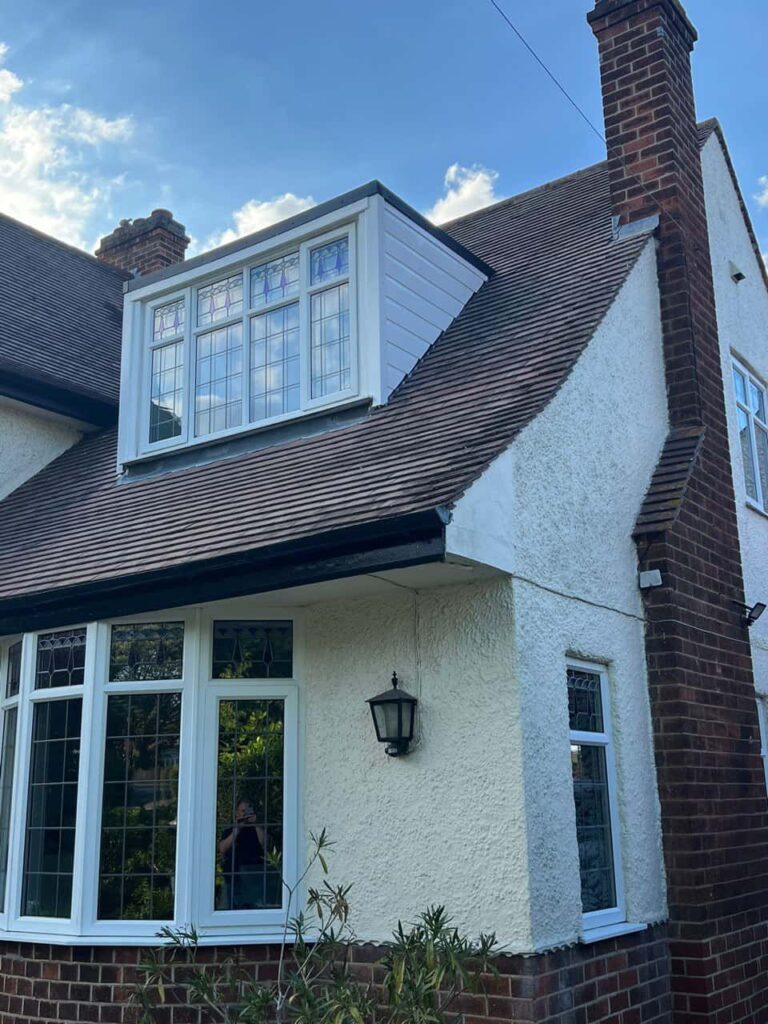Felt roofing is a popular choice for both residential and commercial properties in the UK, known for its affordability, versatility, and ease of installation. However, like all roofing materials, it is essential to take proactive measures to protect felt roofs from the harsh weather conditions typical of the British climate. In the West Midlands, where heavy rain, strong winds, and fluctuating temperatures are common, safeguarding your felt roof is key to ensuring its longevity and performance. At Darlaston Roofing Repairs, we specialise in helping property owners maintain and protect their felt roofs. In this post, we’ll discuss the best practices for keeping your felt roofing in top condition, even in adverse weather.
Understanding the Vulnerabilities of Felt Roofing
Felt roofing is typically made up of multiple layers of bitumen felt, which are bonded together to create a waterproof membrane. While it offers good protection against the elements, felt roofs can be vulnerable to damage from severe weather if not properly maintained. Common issues include cracks, splits, and lifting edges, all of which can lead to leaks and water ingress if left unchecked.
Tips for Safeguarding Felt Roofing Against Harsh Weather
- Regular Inspections and Maintenance
The first step in protecting your felt roof is regular inspections. Conduct visual checks at least twice a year, ideally in spring and autumn, and after any particularly severe weather. Look out for signs of wear, such as cracks, splits, or areas where the felt may be lifting. If you notice any damage, it’s crucial to address it promptly. Regular maintenance, such as cleaning out debris and ensuring gutters are clear, will also help prevent water build-up, which can lead to premature deterioration. - Seal and Repair Minor Damage Quickly
Even small cracks or tears in felt roofing can quickly escalate into major problems if left unattended. One of the most effective ways to safeguard your roof is to address minor damage immediately. High-quality sealants can be applied to cracks and seams to prevent water from entering and causing further issues. In more severe cases, sections of the felt may need to be patched or replaced. Swift action ensures that minor problems don’t develop into costly repairs down the line. - Apply a Protective Coating
A protective coating can significantly extend the lifespan of your felt roof by enhancing its resistance to the elements. Coatings are designed to create a barrier that shields the felt from UV rays, moisture, and temperature fluctuations. This not only helps to prevent cracking and brittleness but also improves the roof’s overall waterproofing capabilities. At Darlaston Roofing Repairs, we offer professional application of protective coatings that provide an extra layer of defence against the harsh British weather. - Ensure Proper Drainage
One of the biggest threats to felt roofing is standing water. Flat or low-slope roofs are particularly susceptible to water pooling, which can lead to leaks and damage over time. Ensuring that your roof has adequate drainage is essential. This may involve clearing blockages from gutters and downpipes, installing additional drainage outlets, or even slightly adjusting the roof’s slope to improve water run-off. By preventing water from sitting on your roof, you reduce the risk of water-related damage significantly. - Reinforce Vulnerable Areas
Certain areas of a felt roof are more prone to wear and tear, such as joints, seams, and around roof penetrations like chimneys or vents. Reinforcing these areas with additional layers of felt or specialised waterproof membranes can enhance their durability. Flashing should also be inspected and repaired as needed to prevent water from seeping into these vulnerable points. - Prepare for Winter Weather
Winter can be particularly harsh on felt roofing, with freezing temperatures, snow, and ice posing significant challenges. Prepare your roof in advance by ensuring it is in good condition before winter arrives. Address any issues with insulation and ventilation, as these can impact how well your roof copes with extreme cold. Proper insulation helps to reduce the risk of ice dams, while good ventilation prevents condensation build-up that can weaken the felt over time.
Why Choose Darlaston Roofing Repairs?
At Darlaston Roofing Repairs, we understand the unique challenges posed by the West Midlands climate. Our team is experienced in maintaining and repairing felt roofs, ensuring that they remain watertight and in excellent condition throughout the year. From routine inspections to emergency repairs and protective coatings, we offer a comprehensive service that is tailored to meet your roofing needs.
Conclusion
Felt roofing offers reliable protection, but it requires regular care to withstand the harsh weather conditions we experience in the UK. By following the tips outlined above, you can extend the life of your felt roof and avoid costly repairs. If you’re in Darlaston or the surrounding areas and need expert advice or assistance with your felt roofing, Darlaston Roofing Repairs is here to help.
Contact us today to schedule an inspection or learn more about how we can help you safeguard your roof against the elements.
Call us on: 0121 312 1686
Click here to find out more about Darlaston Roofing Repairs
Click here to complete our contact form and see how we can help with your roofing needs.

